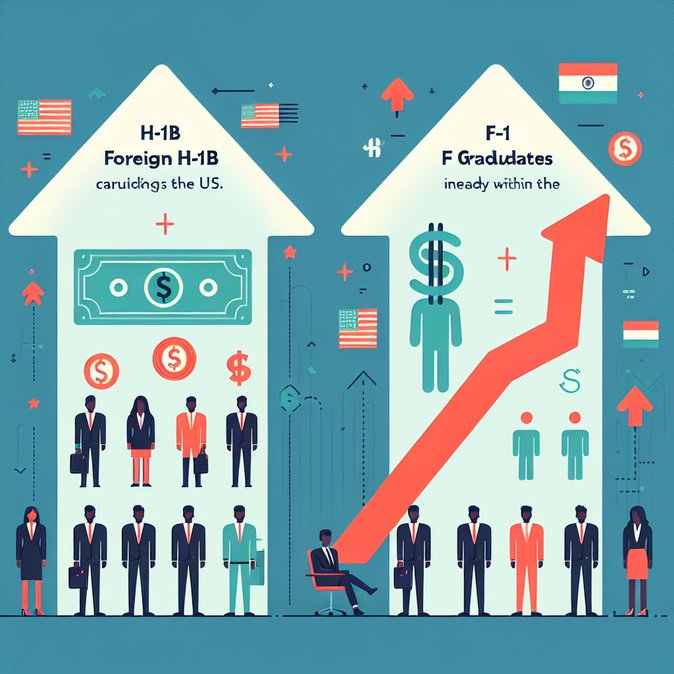
A Times of India report dated 8 November revealed a sweeping US immigration fee overhaul that will reshape global talent pipelines. From the 2026 H-1B filing season, American employers must pay a staggering US $100,000 to sponsor a foreign worker directly from overseas. Crucially, the surcharge does not apply to candidates already in the United States on F-1 student visas.
The policy—announced by US Citizenship and Immigration Services (USCIS) on 20 October—effectively creates a two-tier hiring regime. International graduates of US universities become far cheaper to onboard than equally qualified professionals recruited abroad. For Indian students, who constitute roughly one-third of America’s total foreign enrolment, the change rewrites the cost-benefit equation of studying in the US.
![US $100k H-1B Sponsorship Fee Sparks Strategic Shift—Big Win for Indian F-1 Graduates]()
Indian STEM students currently enjoy up to three years of Optional Practical Training (OPT). Employers can now trial these graduates during OPT, then convert them to H-1B status without incurring the new six-figure levy. Immigration attorneys expect demand for US master’s programmes from India to spike in 2026–27, while Indian IT firms may accelerate on-campus hiring in the US to bypass fees.
Mobility managers should anticipate tighter competition for F-1 talent and may need to adjust scholarship budgets, internship pipelines and long-term assignment planning. Meanwhile, India’s Ministry of External Affairs said it is monitoring implementation to ensure fair treatment of Indian nationals under the revised system.
The fee hike forms part of wider efforts by Washington to protect domestic wages but could paradoxically deepen America’s reliance on talent already nurtured in its universities—many of whom hail from India.
The policy—announced by US Citizenship and Immigration Services (USCIS) on 20 October—effectively creates a two-tier hiring regime. International graduates of US universities become far cheaper to onboard than equally qualified professionals recruited abroad. For Indian students, who constitute roughly one-third of America’s total foreign enrolment, the change rewrites the cost-benefit equation of studying in the US.

Indian STEM students currently enjoy up to three years of Optional Practical Training (OPT). Employers can now trial these graduates during OPT, then convert them to H-1B status without incurring the new six-figure levy. Immigration attorneys expect demand for US master’s programmes from India to spike in 2026–27, while Indian IT firms may accelerate on-campus hiring in the US to bypass fees.
Mobility managers should anticipate tighter competition for F-1 talent and may need to adjust scholarship budgets, internship pipelines and long-term assignment planning. Meanwhile, India’s Ministry of External Affairs said it is monitoring implementation to ensure fair treatment of Indian nationals under the revised system.
The fee hike forms part of wider efforts by Washington to protect domestic wages but could paradoxically deepen America’s reliance on talent already nurtured in its universities—many of whom hail from India.











